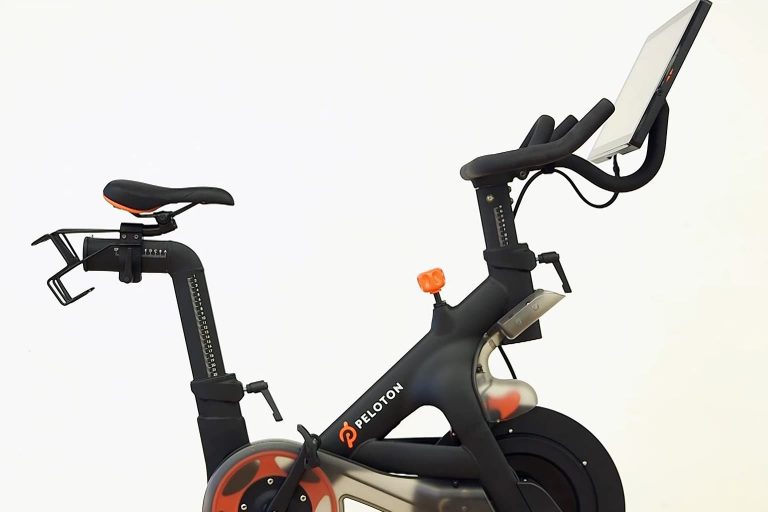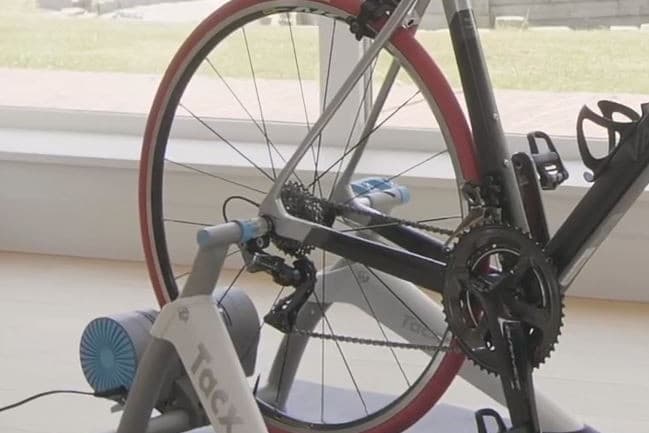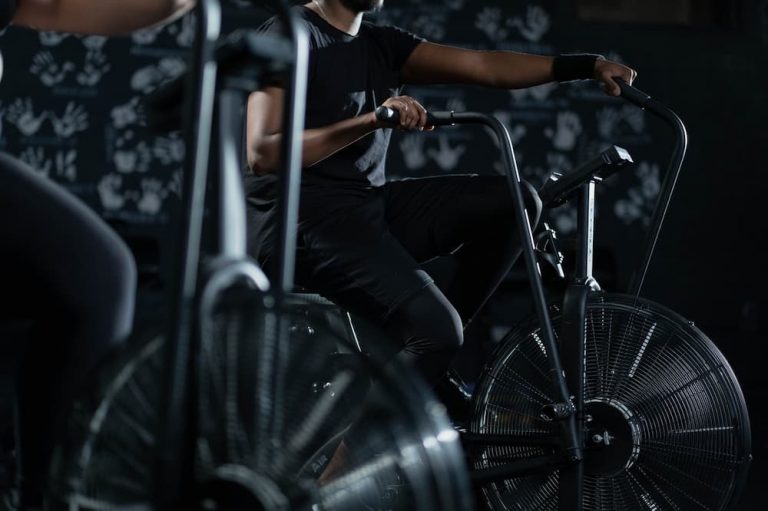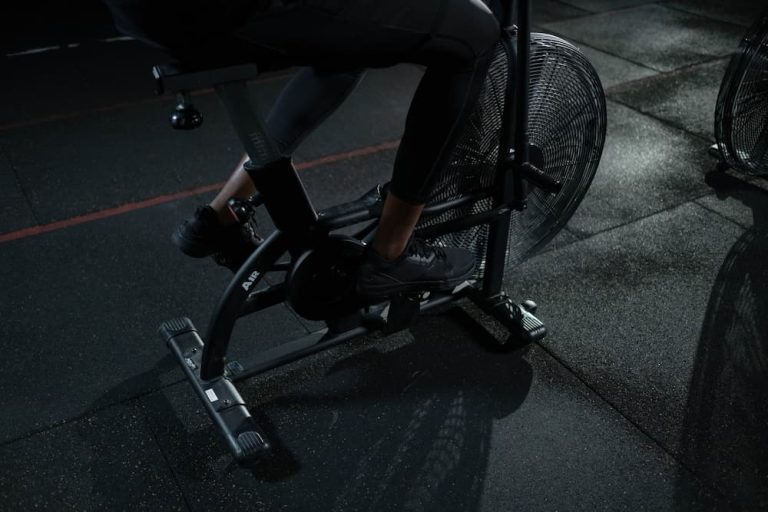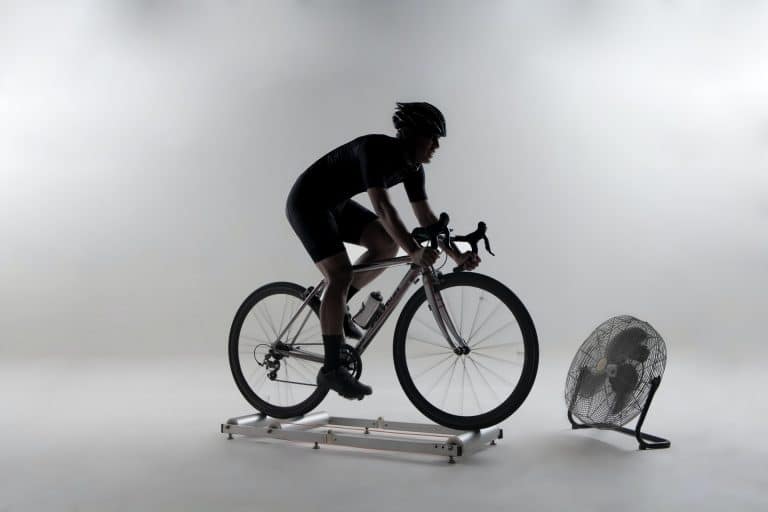Types Of Stationary Bike Trainers
Cycling enthusiasts, like myself, have recently witnessed a surge in the popularity of indoor bike trainers. This boom isn’t surprising, given the sheer versatility and convenience these trainers offer. When I first dipped my toes into indoor cycling, the array of options was overwhelming. It’s crucial to choose a trainer that resonates with your personal cycling ambitions and daily routine.
Each trainer type brings its unique flavor to your workout. Some offer the simplicity and affordability ideal for beginners, while others are decked out with high-tech features that appeal to seasoned cyclists. In my journey, I’ve learned that matching a bike trainer to your individual goals and preferences can profoundly impact your training effectiveness and overall enjoyment.
Contents
Why Stationary Bike Trainer?
Stationary bike trainers, in my experience, are a game-changer for any cyclist’s routine. I was initially drawn to them for their undeniable convenience. Imagine: no more worrying about unpredictable weather or finding time to hit the road. These trainers bring the ride to you, whenever you want it.
The benefits extend beyond mere convenience. Indoor cycling trainers offer a controlled environment for focused, personalized training. Whether you’re aiming for high-intensity intervals or endurance building, these trainers are adaptable to your specific needs. What I love most is their ability to provide consistent training metrics, allowing you to track and improve your performance with precision.
Choosing the right type of stationary bike trainer is more than just a purchase decision—it’s a step towards aligning your indoor cycling experience with your fitness goals. With the right trainer, you can unlock new levels of motivation and progress in your cycling journey.
Wheel-On Trainer
Let me share my take on wheel-on trainers. These are the compact and budget-friendly workhorses of the indoor cycling world. I remember attaching my bike’s rear wheel to the roller for the first time; it was straightforward and hassle-free. The resistance generated by the roller pressing against the tire mimics road cycling quite effectively.
The advantages? Affordability and simplicity. Wheel-on trainers are a fantastic entry point for those new to indoor cycling or on a tight budget. They’re relatively easy to set up and store, making them ideal for small spaces.
However, there are trade-offs. Tire wear is a concern – I learned that the hard way. Plus, the feel isn’t as realistic as some higher-end trainers. And when it comes to noise, they can be louder, which might be an issue in shared living spaces.
Price-wise, you’ll find a broad spectrum, with basic models being quite wallet-friendly, while feature-rich versions edge towards the higher end. Features vary, with some offering smart connectivity for a more interactive training experience.
Direct-Drive Trainer
Direct-drive trainers revolutionized my indoor cycling experience. Unlike wheel-on trainers, these require you to remove the rear wheel and connect the bike directly to the trainer. This setup offers a smoother, more realistic ride, akin to outdoor cycling.
The advantages are significant. First, the direct-drive mechanism provides a more accurate power measurement and a quieter ride. It’s a boon for tracking performance and keeping peace with neighbors. Plus, the absence of tire-to-roller contact eliminates tire wear, which was a constant niggle with my old wheel-on trainer.
However, they come with a higher price tag. You’re paying for the advanced technology and enhanced features, like smart connectivity with apps for a more immersive training experience. Popular models like the Wahoo KICKR and Tacx Neo 2T exemplify the pinnacle of what direct-drive trainers can offer, including realistic road feel and automatic resistance adjustments.
Despite the cost, for serious cyclists or those seeking a top-tier indoor riding experience, I’ve found that the investment in a direct-drive trainer is well worth it for the enhanced training quality and features.
Related reading: Spin Bike vs Stationary Bike Comparison
Bike Simulator
Bike simulators are the luxury cars of indoor cycling. They’re standalone units that replicate a realistic riding feel. I was impressed by their robust, comfortable, and stable design when I first tried one. These simulators are perfect for cyclists seeking a premium, all-in-one solution.
The advantages are clear. They offer a high degree of realism in ride feel, which is great for training specificity. Their sturdy build quality ensures durability and stability, even during intense workouts. Plus, the wireless app connectivity adds a layer of interactivity and fun to training sessions.
However, the disadvantages are noteworthy. Primarily, the cost – these are the priciest option in the indoor cycling market. Also, due to their size and build, they’re not as portable or space-efficient as other types of trainers.
In terms of price range, you’re looking at a significant investment, but the features justify the cost for those dedicated to a high-fidelity indoor cycling experience. It’s like having a high-tech gym-grade bike in the comfort of your home.
Rollers
Rollers are a unique breed in the world of indoor cycling. They consist of cylindrical drums on which the bike balances, challenging both your pedaling and balance. My first time on rollers was a humbling experience; it took a bit of practice to find my rhythm and balance.
The rewards, however, are substantial. Rollers offer a highly realistic road feel, enhancing both balance and pedaling efficiency. They’re fantastic for improving core strength and bike handling skills, something I greatly appreciated as I progressed.
On the flip side, rollers can be intimidating for beginners due to the balance required. There’s also a steeper learning curve compared to other trainers.
Popular models like the Kurt Kinetic Road Machine Pro and Elite Nero Rollers offer varying degrees of resistance and stability. These can be great choices for cyclists looking to add a new dimension to their indoor training regime.
Related reading: Do Bike Trainers Ruin Tires?
Friction Trainers
Friction trainers were my introduction to the world of indoor cycling. These trainers work by applying resistance directly to the rear wheel, simulating real-world riding conditions. They come in various types, including fluid, magnetic, and fan-based models.
The advantages of friction trainers lie in their simplicity and cost-effectiveness. I found fluid trainers, for example, to offer a more road-like resistance and quieter operation. Magnetic trainers, on the other hand, provide adjustable resistance levels, which is great for structured workouts.
However, there are downsides. Tire wear is a common issue, and some models can be quite noisy – something I learned to consider when living in an apartment. Also, the road feel isn’t as realistic as direct-drive or high-end wheel-on trainers.
Popular options like the Saris Fluid2 Trainer and the JetBlack SpeedSmart II cater to a range of budgets and feature sets. They’re a solid choice for cyclists seeking a balance between functionality and affordability.
Folding Trainers
Folding trainers were a revelation for me in terms of space-saving design. These trainers are crafted for cyclists who need portability and compact storage. The first time I used one, I was amazed at how conveniently it fit into my living space.
The primary advantage of folding trainers is their portability. They’re incredibly easy to set up and fold away, making them ideal for small apartments or shared spaces. Many also offer a surprisingly stable ride, despite their foldable nature.
However, there are some drawbacks. Typically, these trainers don’t offer the same level of realism or feature set as more stationary models. Also, the durability can be a concern, especially under intense use.
Models like the Kurt Road Machine 2.0 Folding Trainer and the X-Bike Smart Foldable Trainer are popular choices. They strike a balance between convenience and functionality, especially for those with limited space or who frequently move their training setup.
Hybrid Trainers
Hybrid trainers caught my attention as a blend of the best of both worlds: direct drive and roller features. They’re designed for cyclists who want the convenience of a direct drive but with the option for a roller-like experience.
The benefits are quite compelling. Hybrids offer the stable, realistic feel of a direct drive while still challenging balance and coordination like rollers. This versatility appealed to me as I sought to diversify my training.
However, hybrids can be complex, and their dual nature might not suit everyone. They tend to be pricier than single-purpose trainers and can be more challenging to set up initially.
Popular models like the Elite Suito Trainer and the Tacx Antares Smart Roller showcase the innovation in this category. These trainers are great for cyclists looking for a comprehensive indoor cycling experience, combining the realism of direct drive with the skill development of rollers.
Considerations When Choosing a Bike Trainer
| Consideration Factors | Wheel-On Trainer | Direct-Drive Trainer | Bike Simulator | Rollers | Friction Trainer | Folding Trainer | Hybrid Trainer |
|---|---|---|---|---|---|---|---|
| Fitness Goals | General fitness, beginner-friendly | High-intensity, professional training | Realistic training, premium experience | Balance and technique improvement | Versatile training options | Space-saving, easy storage | Versatility, combines features |
| Budget | Low to moderate | Moderate to high | High | Low to moderate | Low to moderate | Low to moderate | Moderate to high |
| Bike Compatibility | Good for most bikes | Requires compatibility check | High compatibility | Good for most bikes | Good for most bikes | Good for most bikes | Requires compatibility check |
| Noise Level | Moderate to high | Low | Low | Low | Moderate to high | Moderate | Moderate |
| Ease of Use | Easy setup | Moderate setup | Easy setup | Learning curve | Easy to moderate setup | Easy setup | Moderate setup |
| Smart Training Apps | Varies | High compatibility | High compatibility | Limited compatibility | Varies | Limited compatibility | Good compatibility |
Selecting the right bike trainer was a journey of discovery for me. Here are key considerations I found vital in making an informed choice:
Fitness Goals: This should be your starting point. Are you training for endurance, speed, or general fitness? Your goal will influence the type of trainer you need. For intense interval training, I leaned towards trainers with accurate power measurement.
Budget: Your budget will narrow down the options. I found it helpful to balance the cost with the features I needed, rather than just opting for the cheapest or most expensive model.
Bike Compatibility: It’s crucial to ensure the trainer fits your bike. Check compatibility with your wheel size, drivetrain, and tire type. I learned this the hard way when I initially overlooked this aspect.
Noise Level: Especially important in shared spaces. Direct-drive trainers tend to be quieter, which was a key consideration in my apartment living situation.
Ease of Use: Consider how user-friendly the trainer is. Setup, calibration, and connectivity features should align with your technical comfort level. Simpler models were my go-to when I started.
Smart Training Apps: The compatibility with apps like Zwift and TrainerRoad can vastly enhance your indoor cycling experience. I found these apps crucial for keeping my training engaging and effective.
Trainer Type Comparisons
I am currently working on comparison articles. Please let me know in the comments below which comparisons are you interested in the first place.
- Wheel-On Trainer vs Direct-Drive Trainer
- Wheel-On Trainer vs Bike Simulator
- Wheel-On Trainer vs Rollers
- Wheel-On Trainer vs Friction Trainer
- Wheel-On Trainer vs Folding Trainer
- Wheel-On Trainer vs Hybrid Trainer
- Direct-Drive Trainer vs Bike Simulator
- Direct-Drive Trainer vs Rollers
- Direct-Drive Trainer vs Friction Trainer
- Direct-Drive Trainer vs Folding Trainer
- Direct-Drive Trainer vs Hybrid Trainer
- Bike Simulator vs Rollers
- Bike Simulator vs Friction Trainer
- Bike Simulator vs Folding Trainer
- Bike Simulator vs Hybrid Trainer
- Rollers vs Friction Trainer
- Rollers vs Folding Trainer
- Rollers vs Hybrid Trainer
- Friction Trainer vs Folding Trainer
- Friction Trainer vs Hybrid Trainer
- Folding Trainer vs Hybrid Trainer
Conclusion
Reflecting on the different types of stationary bike trainers, it’s clear that the right choice hinges on individual needs and goals. My journey through the world of indoor cycling trainers taught me the importance of aligning my choice with my fitness objectives and living situation.
Whether you’re seeking the realism of a direct-drive or bike simulator, the simplicity of a wheel-on or friction trainer, or the versatility of a folding or hybrid model, there’s a trainer out there for every cyclist. Indoor cycling trainers have revolutionized the way we train, offering opportunities to improve performance, maintain fitness, and explore new training methods, all from the comfort of our homes.
I encourage all cycling enthusiasts to research and explore the various trainer types. There’s a perfect match for your cycling journey waiting to be discovered, one that will elevate your indoor cycling experience to new heights.

